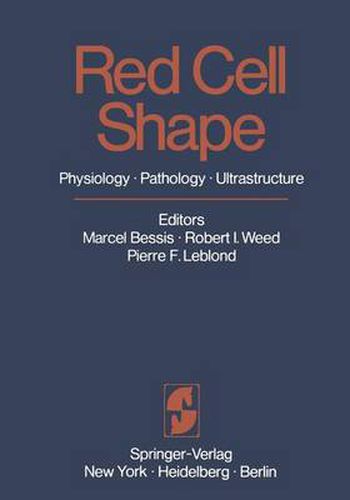Readings Newsletter
Become a Readings Member to make your shopping experience even easier.
Sign in or sign up for free!
You’re not far away from qualifying for FREE standard shipping within Australia
You’ve qualified for FREE standard shipping within Australia
The cart is loading…






This title is printed to order. This book may have been self-published. If so, we cannot guarantee the quality of the content. In the main most books will have gone through the editing process however some may not. We therefore suggest that you be aware of this before ordering this book. If in doubt check either the author or publisher’s details as we are unable to accept any returns unless they are faulty. Please contact us if you have any questions.
This monograph is a collection of invited contributions from a group of investiga tors who share a common interest in the interrelationships between the shape, struc ture, and functional characteristics of normal and pathologic erythrocytes. Most of the authors participated in a workshop on red cell shape held in June, 1972 at the Institute of Cell Pathology, Hopital de Bicetre, Paris. We hope that these various contributions on the physiology, pathology, and ultrastructure of red cell shape will be useful and stimulating for other investigators interested in the correlation of shape and structure with the biochemistry and biophysics of the red cell. The text is divided into four sections. Section I deals with red cell shape, including the presentation of a rational descriptive nomenclature and a discussion of post splenectomy changes. Section II deals with biochemical factors that underlie the disco cyte-echinocyte (crenated) and discocyte-stomatocyte (cup-shaped) transformation. This section includes discussions of plasma factors, and of the biochemical dynamics of erythrocyte lipids and consideration of the effects of such factors as cellular ATP, calcium, aging, and various chemical agents as determinants of shape. Section III, which deals with biophysical measurements, includes studies of the deformability of cells of different shapes, descriptions of ways to define precisely the geometric dimensions of the red cell under various circumstances, and a model of membrane structure, which is proposed to account for the dimensions of red cells that undergo shape change.
$9.00 standard shipping within Australia
FREE standard shipping within Australia for orders over $100.00
Express & International shipping calculated at checkout
This title is printed to order. This book may have been self-published. If so, we cannot guarantee the quality of the content. In the main most books will have gone through the editing process however some may not. We therefore suggest that you be aware of this before ordering this book. If in doubt check either the author or publisher’s details as we are unable to accept any returns unless they are faulty. Please contact us if you have any questions.
This monograph is a collection of invited contributions from a group of investiga tors who share a common interest in the interrelationships between the shape, struc ture, and functional characteristics of normal and pathologic erythrocytes. Most of the authors participated in a workshop on red cell shape held in June, 1972 at the Institute of Cell Pathology, Hopital de Bicetre, Paris. We hope that these various contributions on the physiology, pathology, and ultrastructure of red cell shape will be useful and stimulating for other investigators interested in the correlation of shape and structure with the biochemistry and biophysics of the red cell. The text is divided into four sections. Section I deals with red cell shape, including the presentation of a rational descriptive nomenclature and a discussion of post splenectomy changes. Section II deals with biochemical factors that underlie the disco cyte-echinocyte (crenated) and discocyte-stomatocyte (cup-shaped) transformation. This section includes discussions of plasma factors, and of the biochemical dynamics of erythrocyte lipids and consideration of the effects of such factors as cellular ATP, calcium, aging, and various chemical agents as determinants of shape. Section III, which deals with biophysical measurements, includes studies of the deformability of cells of different shapes, descriptions of ways to define precisely the geometric dimensions of the red cell under various circumstances, and a model of membrane structure, which is proposed to account for the dimensions of red cells that undergo shape change.